Review for The Shinkai Collection
Introduction
Makoto Shinkai is the hot new thing in Japanese animation, and has been for the last ten years. He's another one of the new wave of animators that is constantly being dubbed as the next Miyazaki. It's a little unfair, as his work to date has hardly been the fairy tale wonderments that Miyazaki and Studio Ghibli often astound with. Shinkai's work does share a visual splendour and beauty with Miyazaki's works, although what Shinkai does with light and shade, mood and atmosphere is much more complex. But Shinkai's subject matter, the testing of human feelings against adversity, is a far more adult and mature approach to storytelling that is unique to his works. He's also something of an oddity in the way that he broke into the animation business, creating his first work practically single-handedly on an Apple Mac at home, and capturing the attention of studios that way, rather than working his way up the studio system. He's a product of the modern age, where we all have access to powerful tools at relatively cheap prices, but not all of us have the talent. Back in the nineties people were making pop music in their bedrooms… now they make animated movies.
Makoto Shinkai is also one of the more inaccessible directors in modern anime, at least coming from a UK perspective. His first films, Voices of a Distant Star, and The Place Promised in Our Early Days were originally released here by ADV, but I wavered and waffled, and by the time I got around to filling that gap in my collection, ADV was out of business, and the DVDs were long deleted. His third movie, 5 Centimeters per Second was in licensing limbo for years, initially set for release by ADV before their collapse, Manga Entertainment tried in vain to get the Blu-ray rights before eventually setting out a DVD only release. It was after watching that film last year my desire to see the rest of his catalogue increased to the point that I began regularly scouring the Internet in the hope of finding the films somewhere. It was pure serendipity then that a specialist anime retailer uncovered a few unsold copies of The Shinkai Collection, ADV's collection of the first two discs, which also added a very desirable booklet to the package. You'll have to be just as persistent and lucky to find them now, and probably only second hand. Although with Makoto Shinkai's latest film, Children Who Chase Lost Voices From Deep Below wowing the festival circuits earlier this year, and his earlier works getting a Blu-ray re-visitation in Japan (English friendly in the case of 5 Centimeters Per Second and Voices of a Distant Star), it may be an opportune moment for an enterprising anime distributor to re-licence these works.
Voices of a Distant Star is reviewed on Page 2
The Place Promised in Our Early Days is reviewed on Page 3
Extras
The Shinkai Collection gets extravagant packaging for just two discs, an m-lock style Perspex brick, which for some daft reason still has both discs overlapped on the rear panel. The silver sleeve is pretty simple, but the interior art is very evocative, as are the disc labels.
The big draw here is the additional 44-page booklet containing introductions by Makoto Shinkai, production notes, glossaries, artwork, storyboards, and background to the films. 26 pages are devoted to Voices of a Distant Star, starting from the front of the book reading forward conventionally. The material for The Place Promised in Our Early Days starts at the back and works its way backwards towards the middle. There is a lot to take in here, densely written in a small font, and it's well worth devoting a good amount of time to reading it. It's all excellent stuff.
Conclusion
Anime as art! So often anime is looked down as a minority, niche product, and in terms of content it invites raised noses and sneering epithets. On occasion it can be deserved. Like any entertainment medium the content is dependent on the creator and the consumer. As long as children the world over enjoy collecting cards and vicariously engaging in animated tournaments, shows like Pokemon will forever be churned out. Lowbrow tastes will always be catered for by fan service, and there will always be something to irritate Middle England. It's just the same with live action cinema.
Where there is the monobloc of the majority, there is also the auteur, the individualist, the artist, the outsider looking in, the genius talent that picks up the same tools as the mass-production studio system, and instead creates pure art. Makoto Shinkai is such a creator. You can take one of his films, press pause at any point, and you can hang that freeze-frame on a wall. But as always, art is the most subjective of topics, and Shinkai's muses of regret, loneliness, separation and loss may not be to all tastes. But I'd much rather own a piece of art that I didn't comprehend, than a mass produced poster of a tennis player scratching her arse. If I don't understand an artwork today, I may be in the appropriate emotional frame of mind to appreciate it a week, a month, or even ten years from now.
What I'm saying is that if you find any of Shinkai's films available, new or second hand, snap them up without hesitation.
Introduction
Voices of a Distant Star
It's the middle of the 21st Century, and mankind is expanding into space, exploring the solar system and even colonising other worlds. It's on Mars that aliens are first encountered, but the first contact with the Tarsians is devastating, and a conflict erupts. It's the discovery of Tarsian technology that allows mankind to pursue the war, to upgrade their ships to travel faster than light, and the plan is to track the Tarsians down to ensure humanity's safety.
Noboru and Mikako are middle school students whose friendship is slowly developing into something deeper. Except that Mikako is selected to join the force that is going out to track the Tarsians. Her life becomes a mixture of training and tense situations, as she goes to Mars, and then Jupiter as part of her training, and then to the edges of the solar system and beyond to track down and combat the Tarsians. For her it's a matter of hard work and combat, interspersed with brief moments of melancholy when she recalls the normal world that she has left behind, and the only contact remaining to her, her mobile phone that she uses to text Noboru. For Noboru, his life is supposed to continue as before, going to high school and living his everyday life, but he's left waiting for Mikako's e-mails, the distance being just minutes and hours at first, then stretching to months and even years the further away from Earth that she travels.
Picture
Voices of a Distant Star gets a 4:3 regular transfer, which is overscan friendly for older sets. That means that it's a slightly window-boxed square on modern screens. The image is clear and sharp throughout, and given that it is an NTSC-PAL standards conversion, issues like ghosting and judder rarely become apparent. The animation is pretty simple, with tricks used to make most of the dialogue happen off screen, and the character designs are also pretty simplistic. That aside, Voices of a Distant Star is absolutely gorgeous when it comes to the world design, the pastel shades, the use of light and filters. It really is an artwork brought to life, and you can see Shinkai's unique style established early on.
Sound
It's here where we come to a problem, the problem that made me hesitate in buying this collection in the first place. Voices of a Distant Star comes with three DD 5.1 audio tracks, the English audio, the Japanese audio, and the original scratch track with the director and his fiancé providing the voices. The trouble is that both of the Japanese audio tracks are out of sync, preceding the action on screen. I'm fortunate in that I have a Blu-ray player that allows you to add a lag to audio to compensate for temperamental AV equipment. I found that adding a 250ms lag to the disc lined up the Japanese audio with the picture. Some software DVD players allow you to do the same thing.
Otherwise the audio is pretty good, with the 5.1 providing a nice bit of ambience, and bringing out the action sequences on the film. It also highlights Tenmon's evocative score for the piece, and the dialogue is clear on all three versions. The only other issue might be the occasional error in the translated subtitle track. The English audio gets a signs only track to accompany that.
Extras
There are quite a few extras on this disc, including the Director's Cut with Makoto Shinkai as Noboru, and Mika Shinohara as Mikako that I have already mentioned.
You'll also find his earlier work, She and Her Cat presented here in its full 5-minute version, a 3-minute version, and a 90-second digest version. It's a monochrome tale of a cat and his new owner, narrated from the cat's point of view. It's the story of their life together, and is an evocative piece, reflective and melancholy. What's surprising is that you can see Shinkai's eye for detail, and his stunning use of shade and light, even in something lacking in colour. It's presented in its original Japanese audio, and subtitled.
The Interview with the Director lasts 8 minutes, and Shinkai talks about how he came to make Voices of a Distant Star.
The Original Production Animatic lasts 23 minutes, is itself in monochrome, and offers Voices of a Distant Star in storyboard form, with occasional unfinished CGI and unfinished animation.
The Original Japanese trailers for the film are here, running to a total of 7½ minutes.
Finally there are trailers for other ADV product, including Rahxephon, Zone of the Enders Dolores, King of Bandit Jing, and Neon Genesis Evangelion.
Conclusion
Earlier this year I had the chance to see TO, Fumihiko Sori's CGI extravaganza, which adapted two rather eclectic sci-fi tales to the modern age. One of those stories had as its emotional driving force a relationship sundered by space and time. What it did in some 45 minutes, and several million yen of CGI doesn't approach what Makoto Shinkai managed on a Power Mac, at home, and in just 25 minutes. Voices of a Distant Star is also about a love torn apart by space and time, but it will be only the most iron-willed of viewers who won't be troubled by a quivering lip, or a moistening of the eyes. Voices of a Distant Star effortlessly captures the emotions of its protagonists, making real the distance and alienation that we so often metaphorically experience in our own lives.
The harshest thing is that Noboru and Mikako's love is one that never really had a chance to happen, is a whole lot of lingering what-ifs that haunt the both of them after their separation. For Mikako, it's always a now thing, for her time flows normally, she doesn't age, she moves from one difficult situation to the next, pausing only briefly to think of all that she's had to give up, and holding onto the lifeline that is her mobile phone, her one connection to all that was normal. The sad thing is that she's completely aware that time is moving at a different rate for Noboru, that each message that she sends reaches him further and further apart in time, that the boy she knew doesn't even exist anymore.
For Noboru, what could have been a pleasant childhood memory, a warm melancholy time in his life, turns into a wound that never heals. For anyone else such friendships that are torn apart by distance gradually fade, as both parties find new lives and new friends, and slowly stop communicating. At first this looks inevitable, as they are reduced to texting each other across the solar system, but the further that Mikako goes from the Earth, the longer it takes for her messages to reach him. Waiting a few hours or days for a response is one thing, but when it comes down to waiting for months and even years, it's like having a void in your life that slowly begins diminish, only to be hollowed out anew when a few years later a new message arrives, from a person who in her perspective is only a few hours older than before.
Voices of a Distant Star is a peach of a short movie, which on this DVD gets a very worthy assortment of extra features. The shame is that the Japanese audio is out of sync but if you have the means, it is possible to get around that. Otherwise the English dub is very serviceable. Hopefully it's a licence that won't be allowed to lie fallow for too long.
Introduction
The Place Promised In Our Early Days
It was an idyllic summer for school friends Hiroki, Takuya, and Sayuri. They were growing up in an alternate post-war Japan where North and South had been sundered by US and Union forces, and the prospect of war always loomed high. But there was something about that perfect summer in Middle School that was just special. Hiroki and Takuya got part time jobs assembling missiles in a factory, but their real dream was to build and fly an aeroplane. They spent all their free time working on the project, and when Sayuri found out, she supported them in their dream. This urge to fly was inspired by the constant vision of the Tower. An edifice reaching high up to the stars on the Union island of Ezo, what was once called Hokkaido. No one knew exactly what its purpose was, but it was visible, even as far away as Tokyo. Hiroki promised Sayuri that once the plane was completed, they would fly together to the Tower. Then one day, Sayuri didn't come, and she was never heard from again.
Three years pass, and the tensions between North and South increase. Takuya now works in a research facility, and knows more about the Tower than flying past it could ever have revealed. Both sides are engaged in a new kind of arms race, and with the Tower, the Union side has had a major head start. Takuya is working with the team that is trying to catch up. Hiroki on the other hand simply started high school in Tokyo, and tried in vain to put that summer behind him. But he's haunted by the past, haunted by Sayuri, and haunted by the promise that he couldn't keep. The researchers may have made a breakthrough though. There's a girl comatose in a Tokyo hospital, whose dreams seem connected to the Tower and understanding why may give the North the edge. She's Sayuri of course, who fell asleep three years ago, never to wake up. In her dreams, she's been reaching out to Hiroki, and he comes to realise that only by fulfilling the promise will she wake up. But Takuya learns that if she wakes up, it may mean disaster for them all.
Picture
The Place Promised In Our Early Days gets a 1.85:1 anamorphic transfer, which given that this is an older release is an NTSC-PAL standards conversion. There are no issues with overscan here, and the image stretches to the edges of the screen. Shinkai's films aren't known for their darker scenes, so ghosting and judder rarely becomes an issue, although there is the occasional blended frame. The image is clear throughout, and Shinkai's fantastic colour palette comes to the fore. It's a little soft, but not excessively so, and given the tone of the film, a little softness to the image is actually appropriate. You can see the same directorial flair displayed in Voices of a Distant Star carried through here. The use of colour, of light, and brightness and unconventional framing is truly breathtaking. But you can also see the steps forward in the quality of the film, detail and resolution is greater, the animation is much more robust, and character designs aren't as flat, and while exhibiting Shinkai's style, are also a little more conventional when it comes to anime.
Sound
No problems at all with the audio thankfully, and you get a couple of very pleasant DD 5.1 audio tracks, English and Japanese. Given that this is a film that has a fair bit of action in between the melancholy, the soundstage is well used in bringing out the discrete audio placement. Tenmon's music is once more gentle and anthemic. A feature of Shinkai's films is that he doesn't normally cast the typical voice actors in his main roles, rather he goes for actors from other disciplines such as television or live action film, and that difference does tell in the Japanese dub. Not so in the English dub, which is typical ADV, easy to listen to, but not quite on the same level as the Japanese. Subtitles and a signs only track are provided, and other than the odd typo, are fine to read.
Extras
You get a nice set of animated menus, but the significant extras on this disc comprise the interviews with the cast and the director. You can select from Masato Hagiwara (Takuya) 11 mins, Hidetaka Yoshioka (Hiroki) 10 mins, Yuuka Nanri (Sayuri) 12 mins, and director Makoto Shinkai, who speaks for 12½ minutes. You can learn a lot about the characters and the actors' experiences in recording the roles. There's much about the film, and Shinkai talks about the making of the film, and working as part of a collaborative effort for a change.
You'll also find the Special Preview, Full Length, and Web trailers for The Place Promised In Our Early Days.
Finally there are ADV trailers for Voices of a Distant Star, Last Exile, Kino's Journey, Area 88, and Yugo The Negotiator.
Conclusion
I now have a favourite Shinkai movie, although given that I have thus far only seen three films from a total output of four, that's hardly an unqualified pronouncement. All of Shinkai's films explore common themes of separation, loss and regret. It's all about the flavour of emotion, intense melancholy, infusions of nostalgia, all of which comes through with the measured pace of the storytelling, the introspection, self analysis and narrative of the main characters, and the rich, ideal world imagery. It seemed like a new way of doing things in Voices of a Distant Star, and it reaches an emotional pinnacle in 5 Centimeters Per Second, but in The Place Promised In Our Early Days, with its sci-fi storyline, it has a grand and panoramic scope that takes the breath away. This is a film so beautiful that it hurts the eyes. The reason why this film is my favourite, is that given Shinkai's exploration of separation, loss and regret, this film is the closest that you get to a happy ending.
Once again however, it's a case where the sentiment of the piece overwhelms the narrative. It's a film that tells its emotional arc first and foremost, and the narrative, the ideas and concepts behind the story are only there to motivate that arc. If you're switched on to the story more than the characters, you may scratch your head at one or two whopping great loose ends, but if instead you are invested in the journey that Hiroki, Sayuri and Takuya take, then the warm glow that the film leaves you with will lift you no end.
Despite this, Early Days still has the strongest narrative of the three films that I have seen, and the most compelling of the sci-fi concepts used in Shinkai's films. The alternate history Japan has just enough of a twisted sideways design ethic to make it stand in contrast against the real world, and just as I recognised elements of Distant Star in Fumihiko Sori's To, I was tickled by the echoes I saw of The Wings of Honneamise. This film too pits hopeless idealism against harsh reality, leading to a conclusion that takes place against the background of war. The idea of Sayuri's three year long slumber reminded me a little of the 'Standstills' of Please Teacher, while the central conceit of the Tower and the arms race between the North and South had touches of Noein to it. But just like Voices of a Distant Star, and it's Twin Paradox storyline, this film uses its building blocks to tell the emotional journey of its characters, and you never really get too involved with the mechanics of its concepts, or overwhelmed by jargon. You'll be too misty eyed before it even becomes an issue.
The Voices of a Distant Star disc may have its issues, but The Place Promised In Our Early Days more than makes up for it. It's a peach of a film, a reminder that cinema is a visual and aural medium first and foremost, and that film can affect you on a far more fundamental and basic level that narrative and story alone ever can.
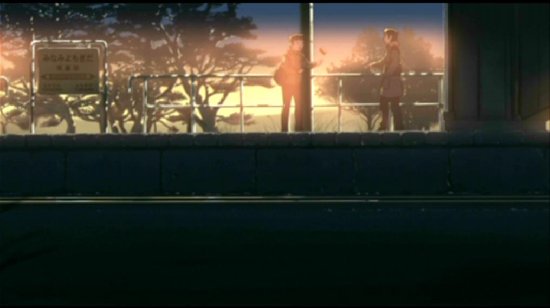
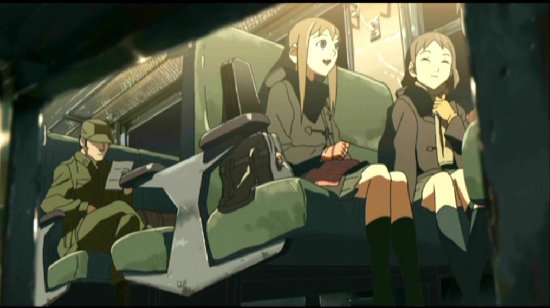
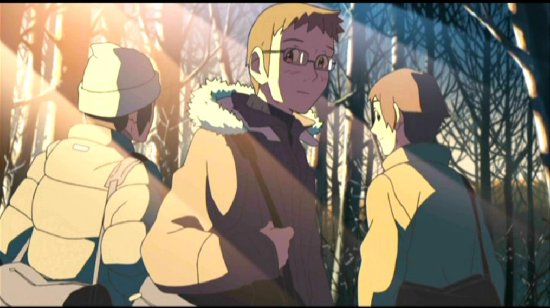
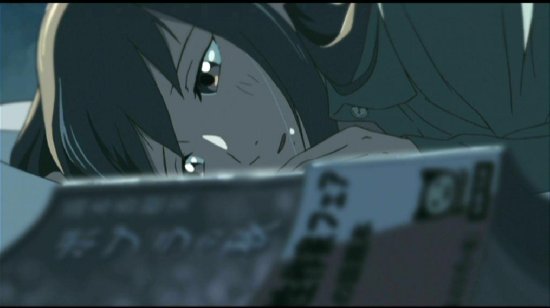
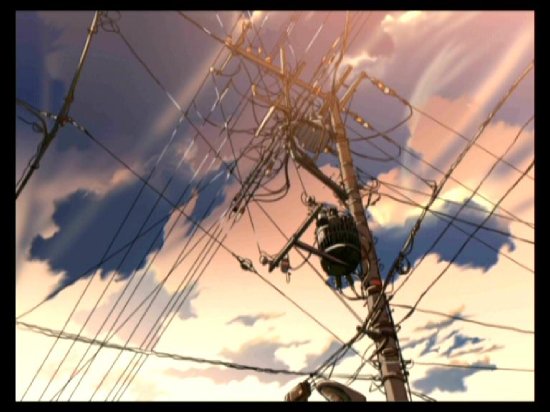

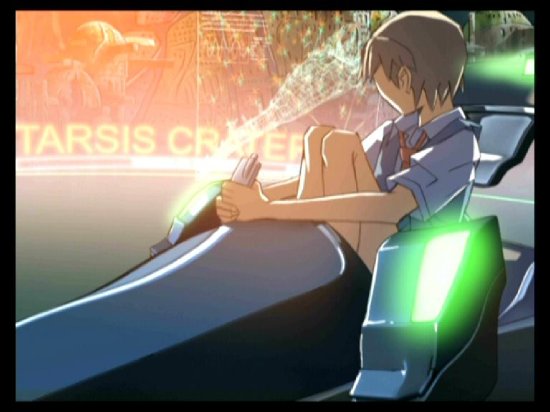
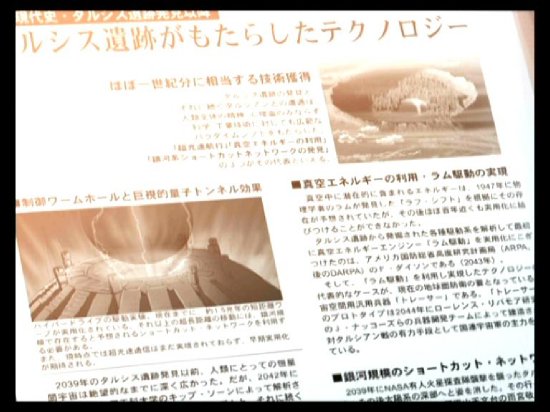
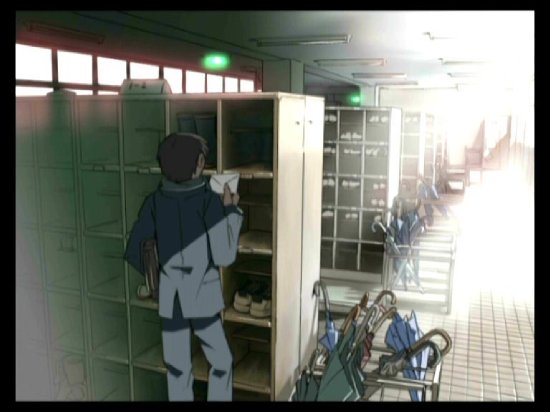
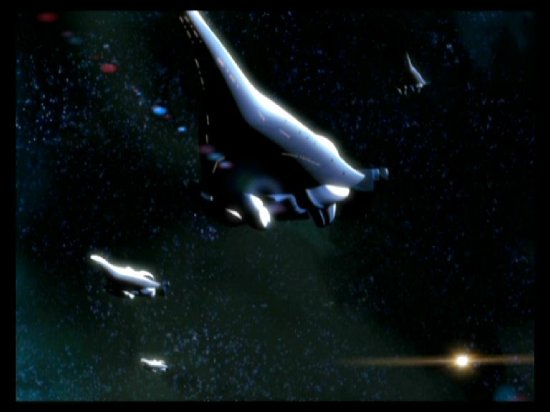
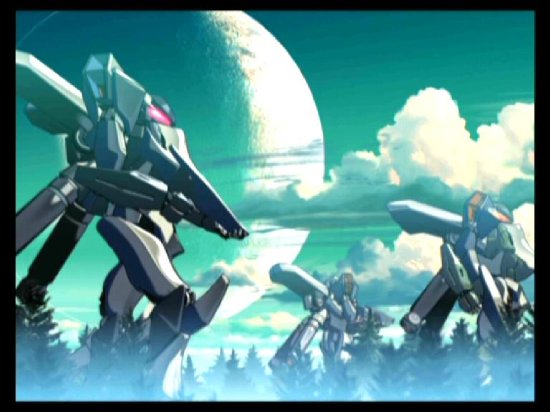
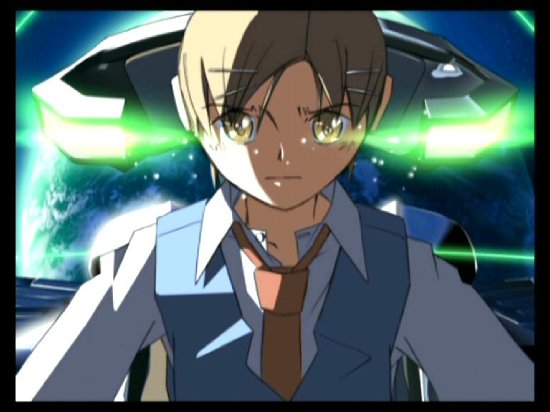
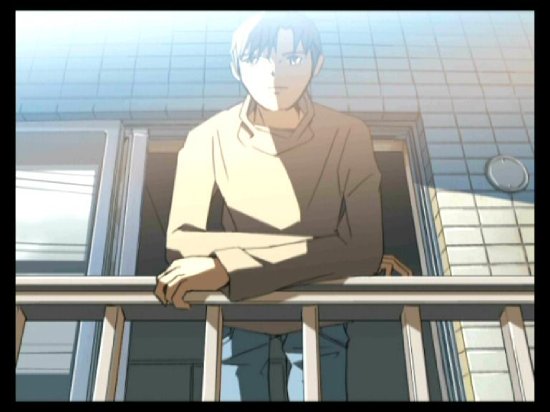
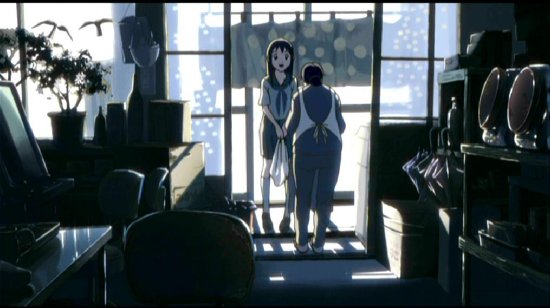
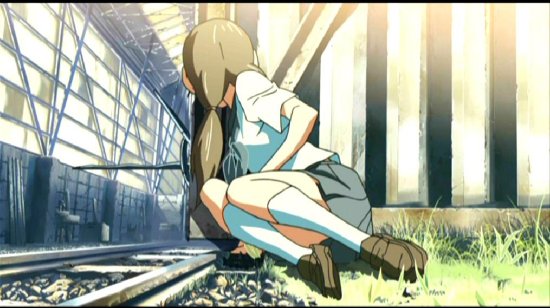
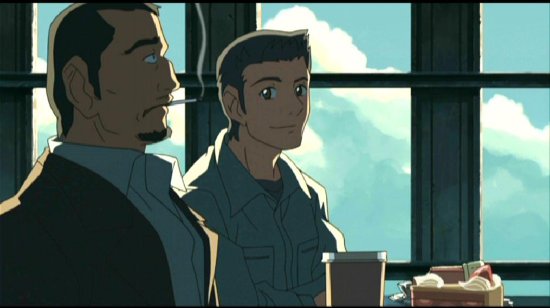
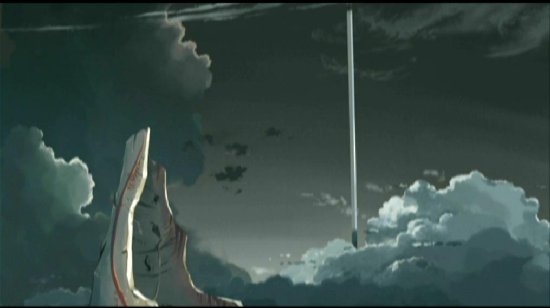
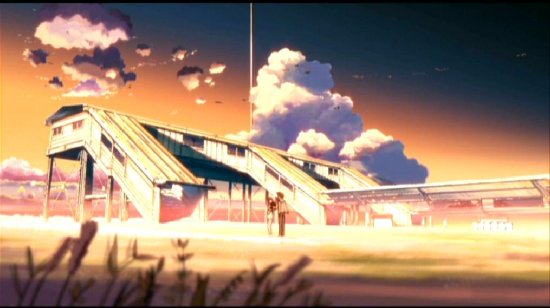
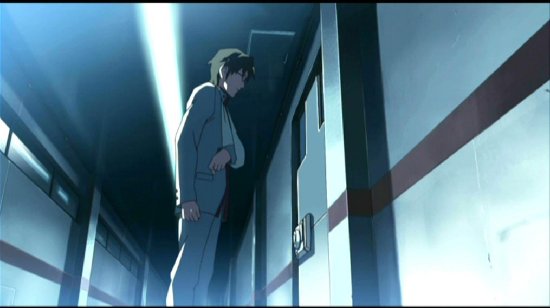
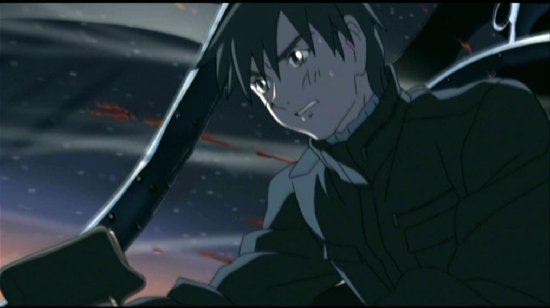
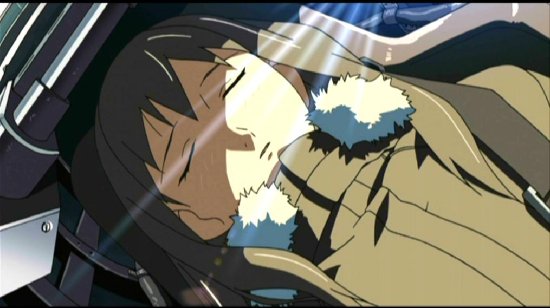
Your Opinions and Comments
Be the first to post a comment!